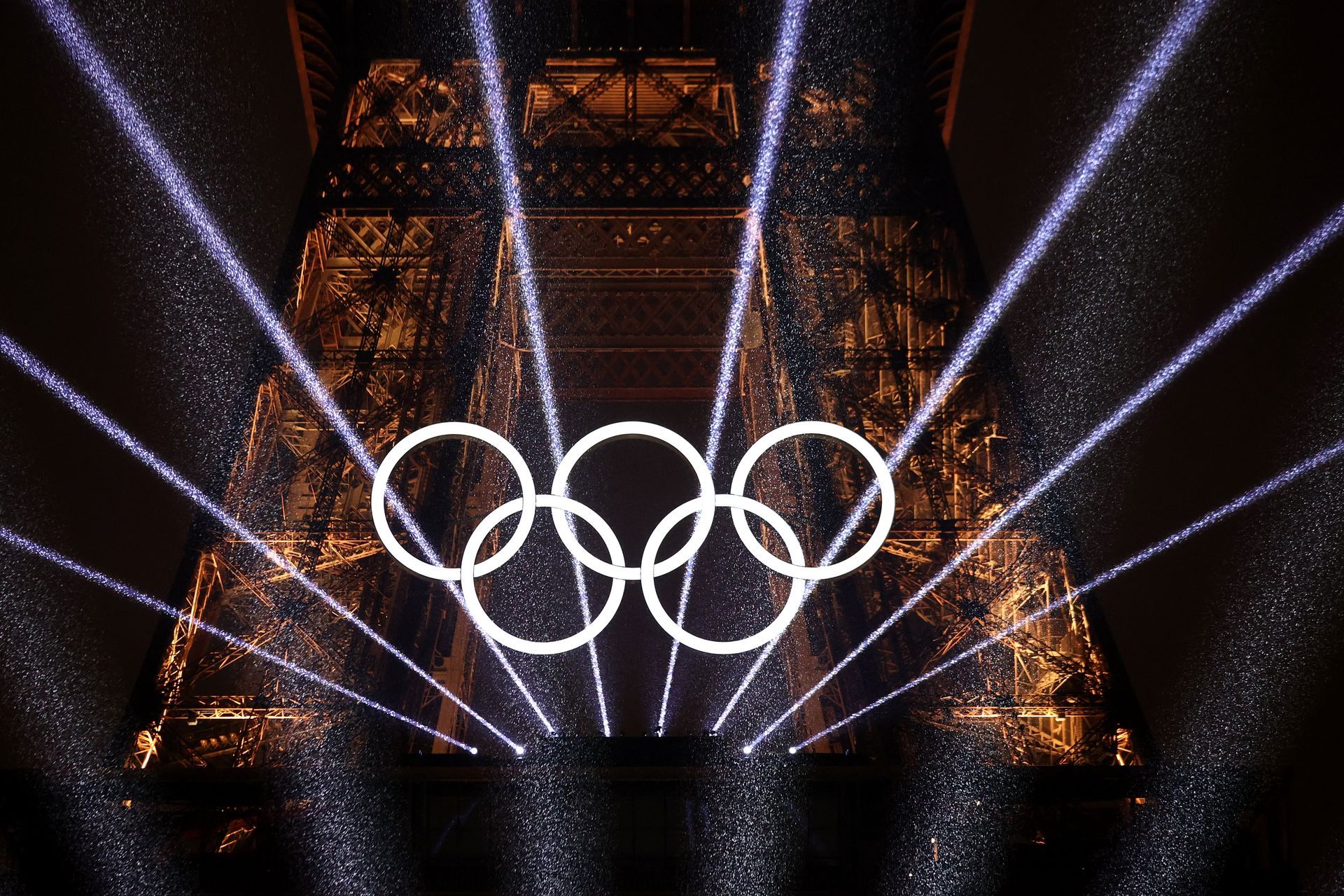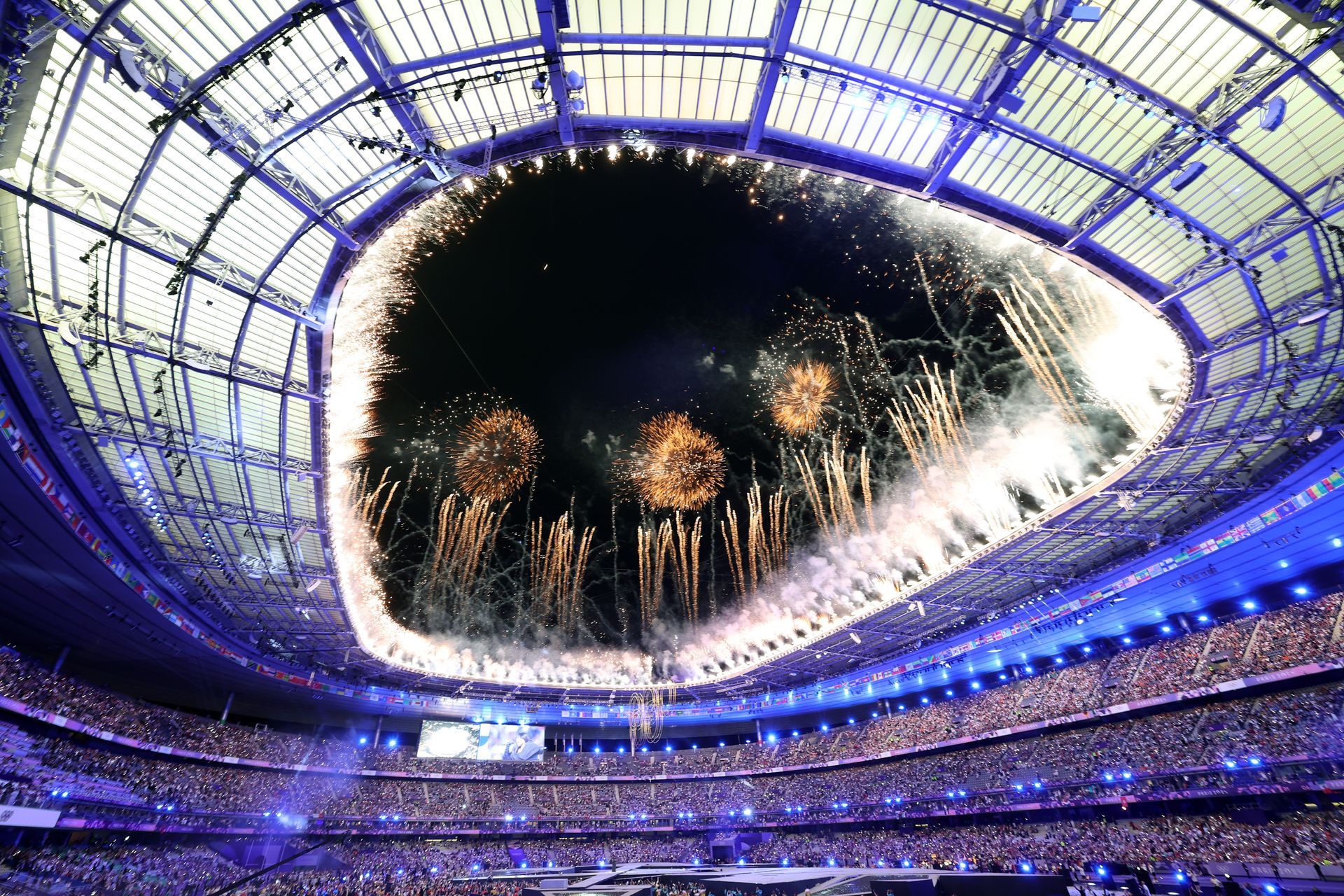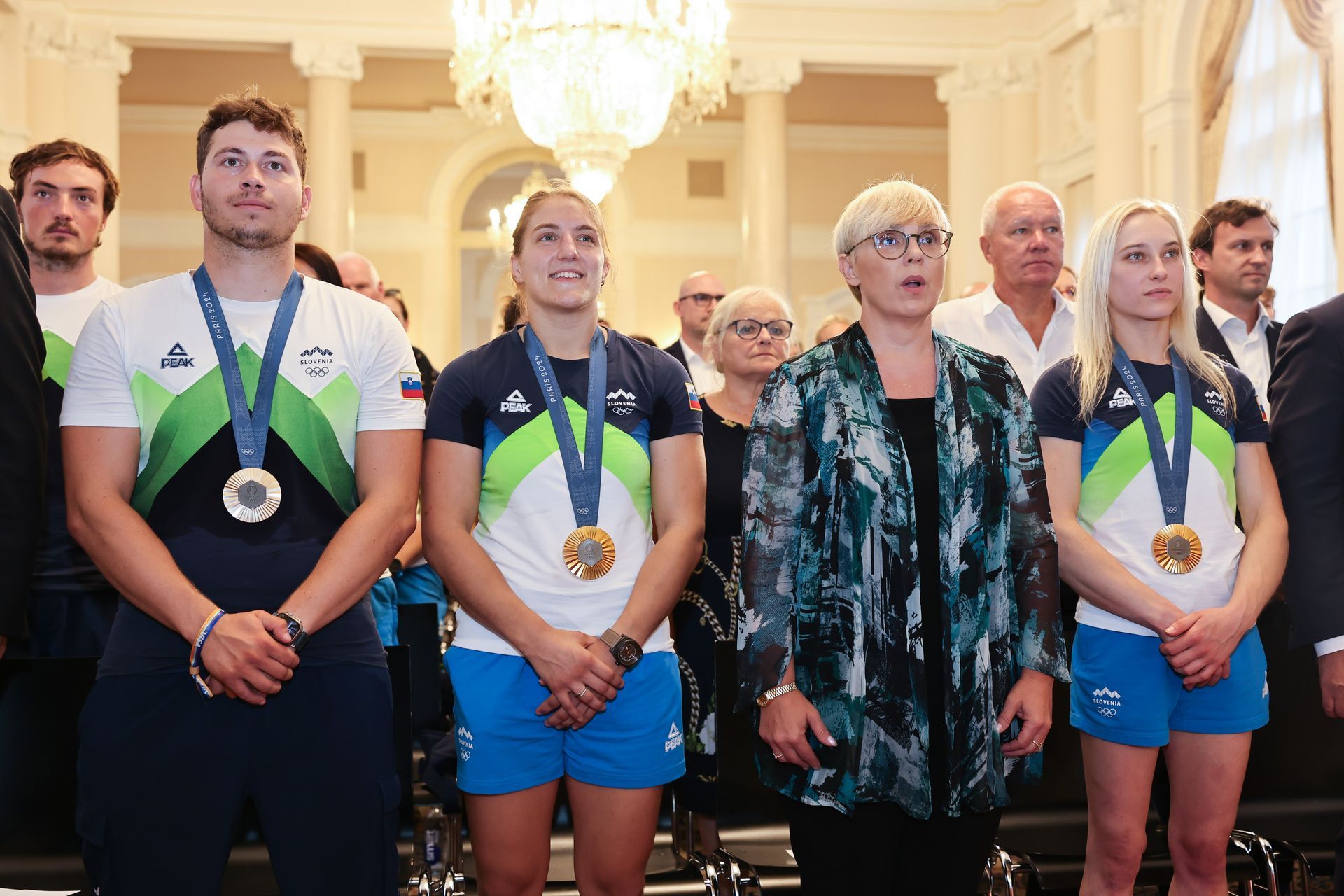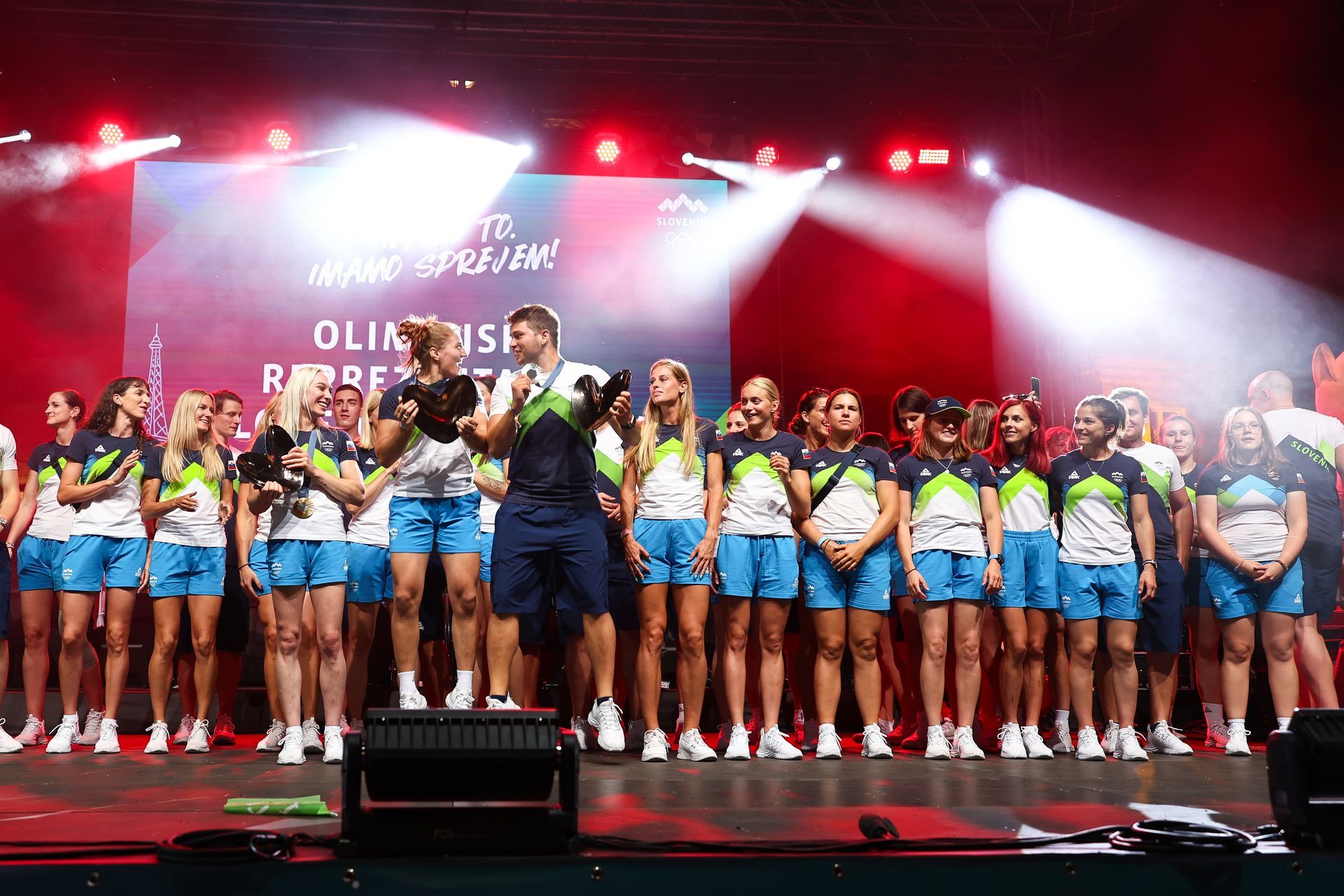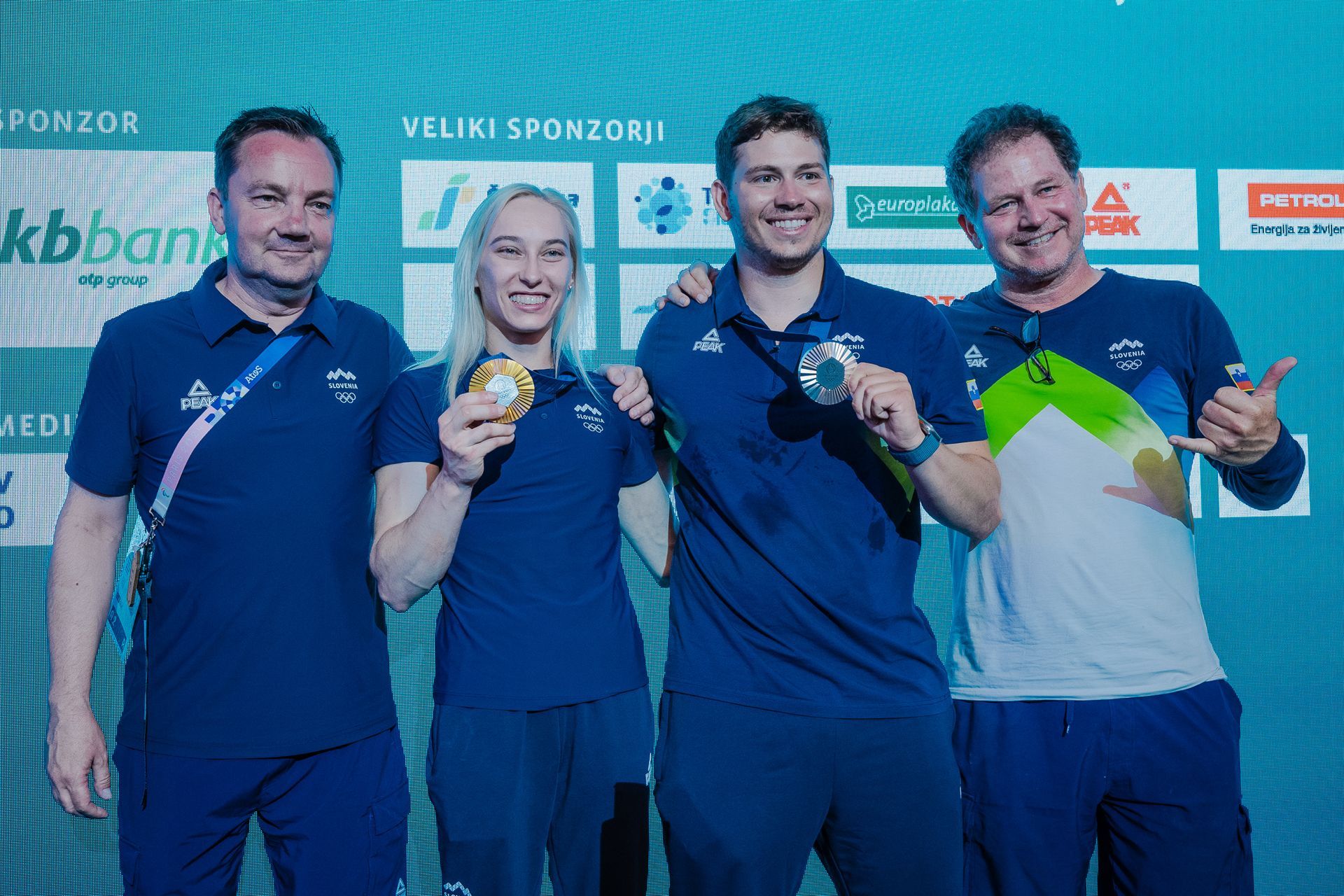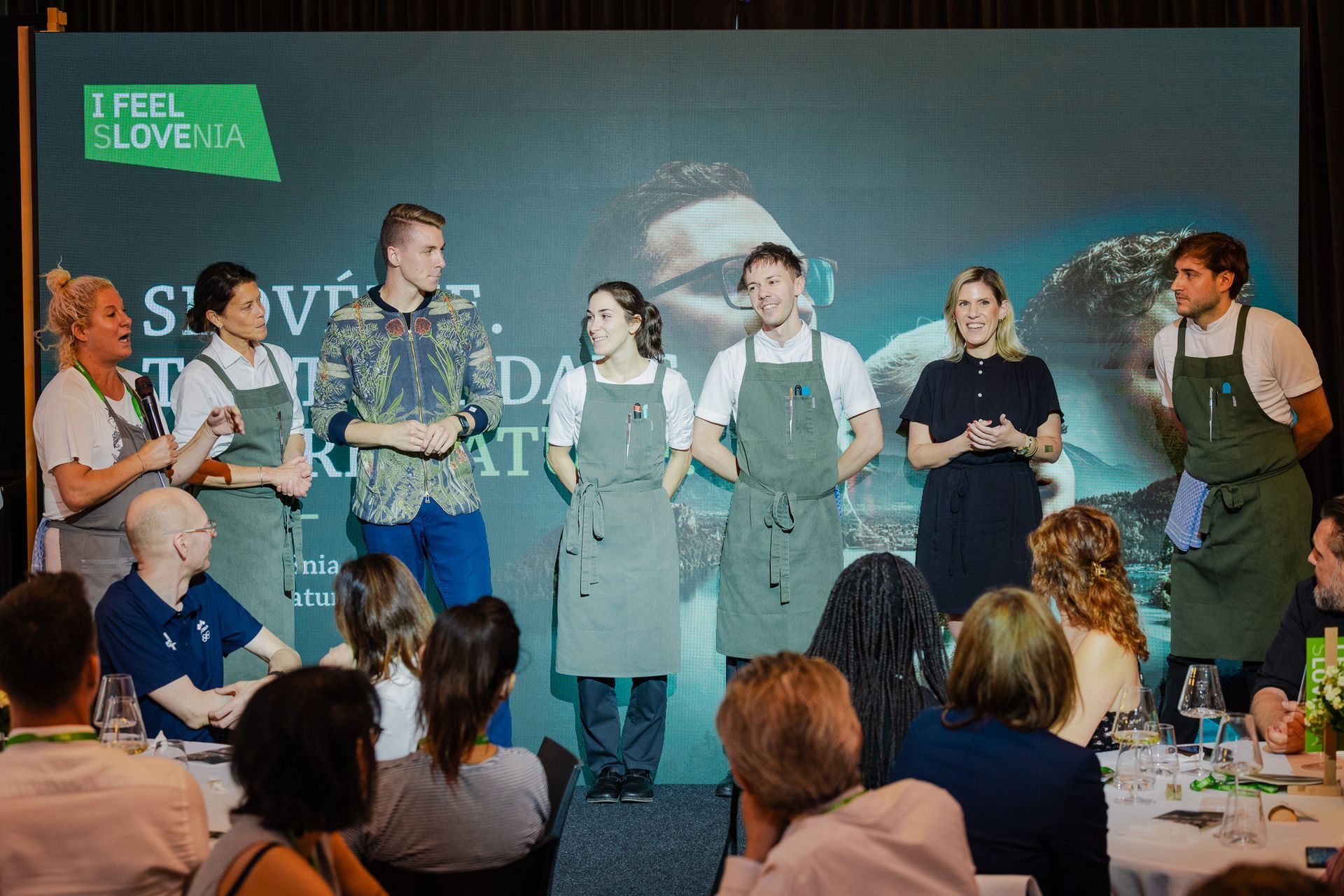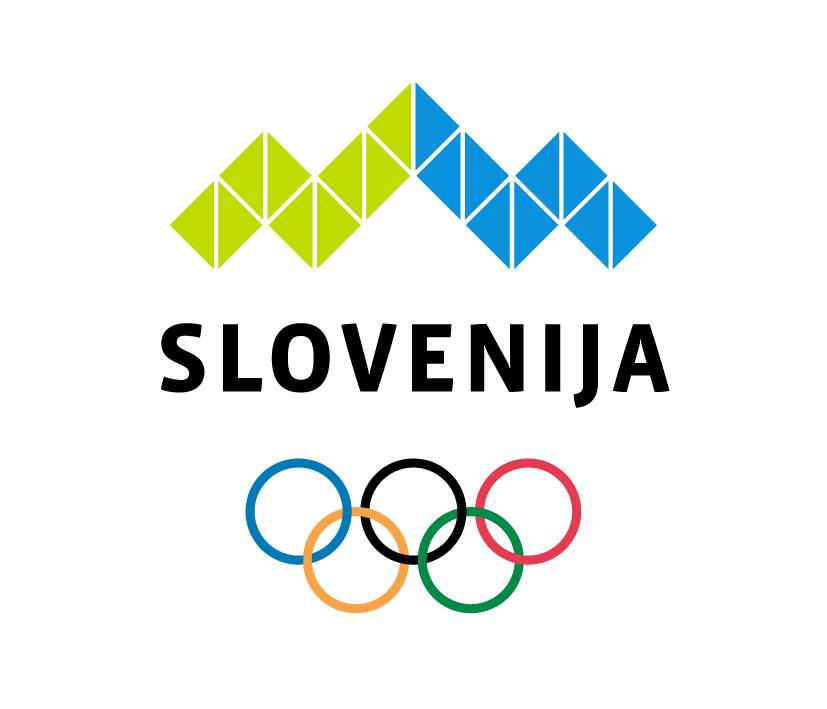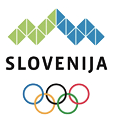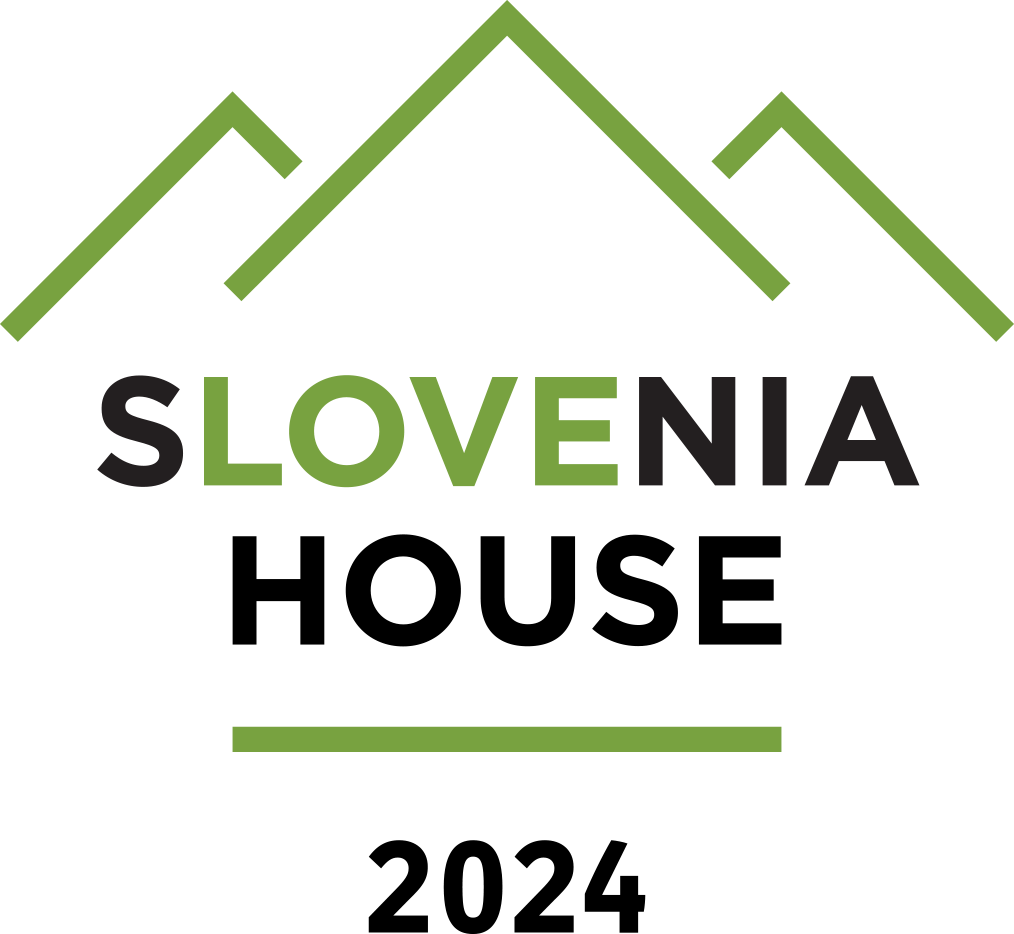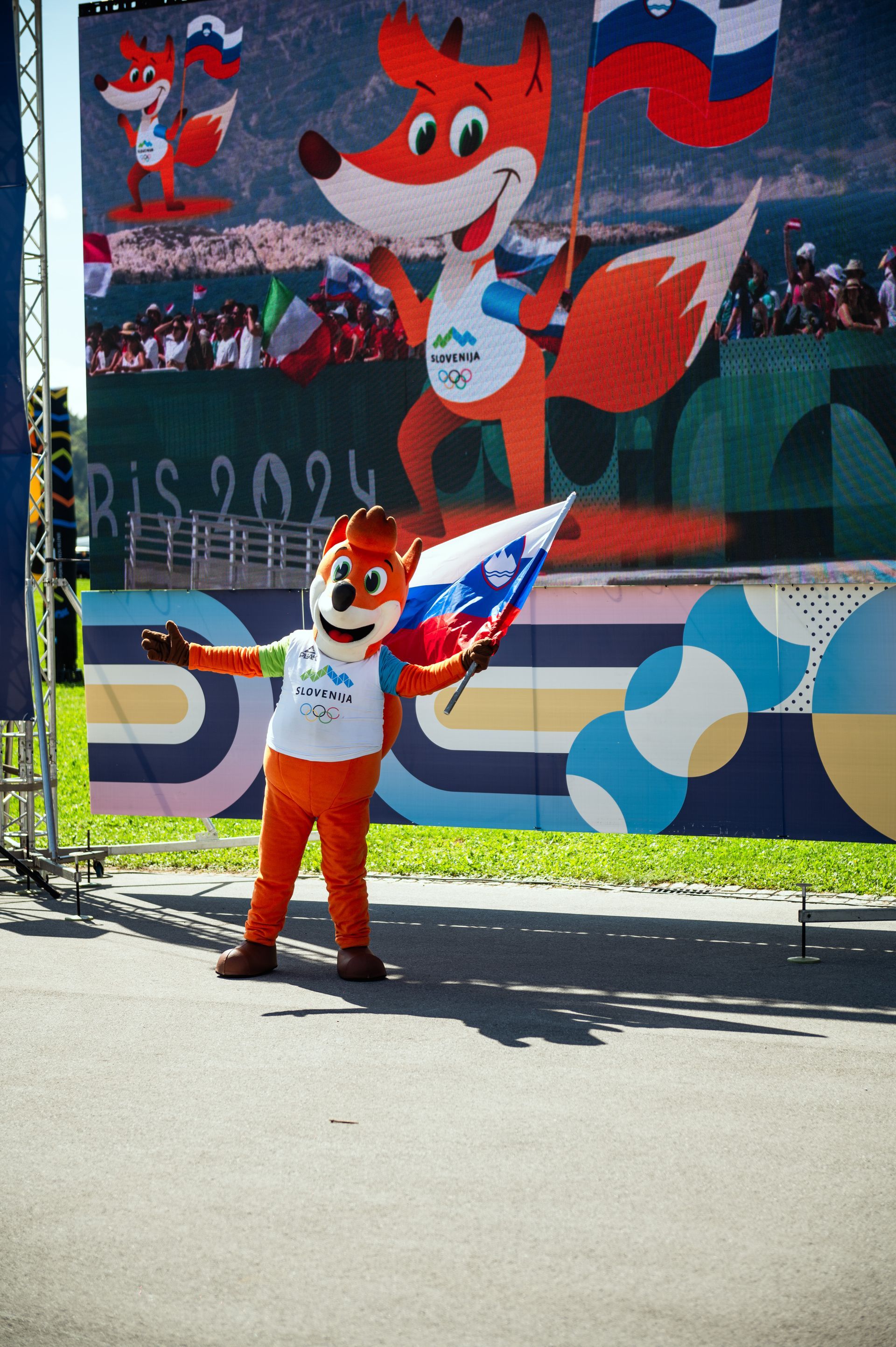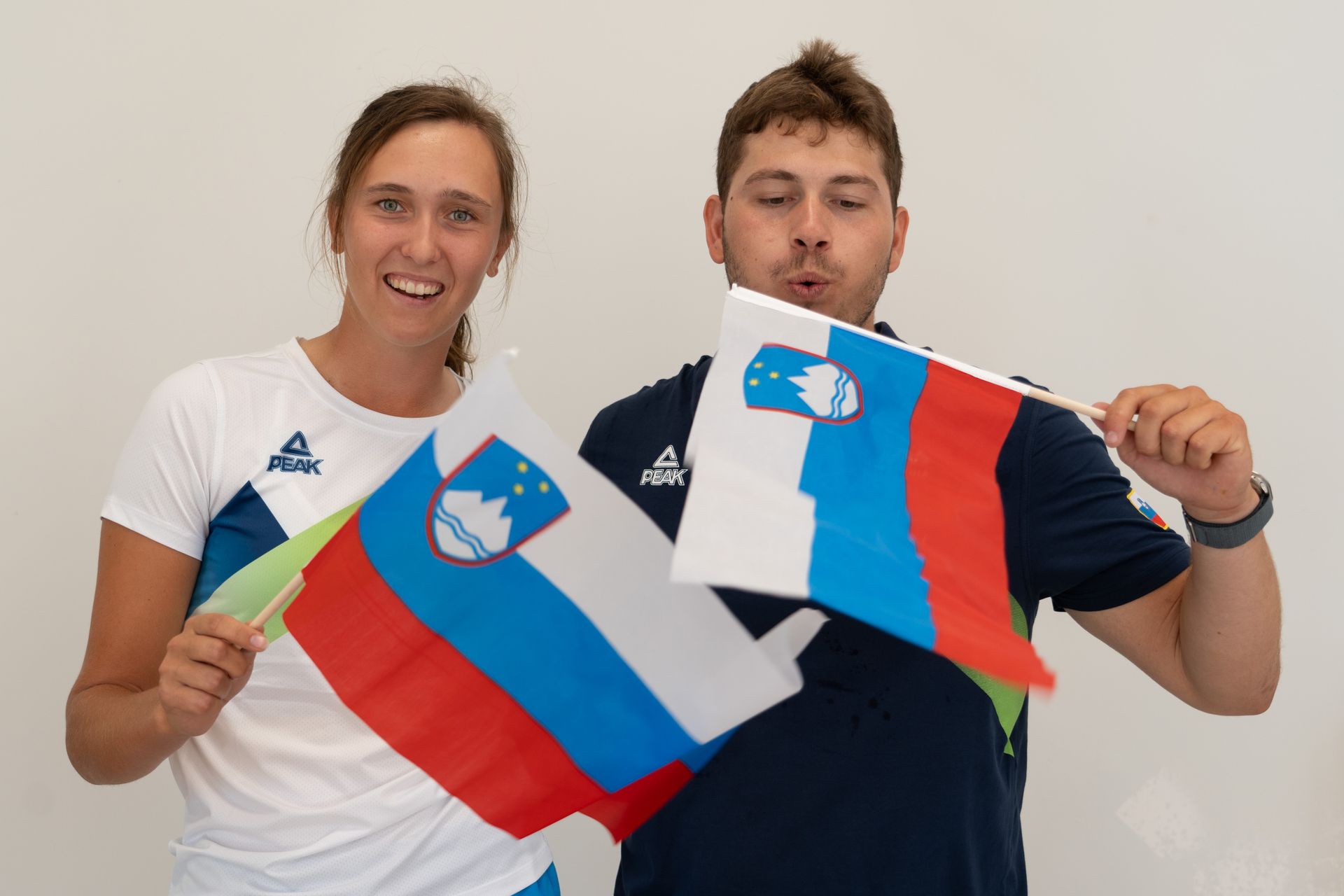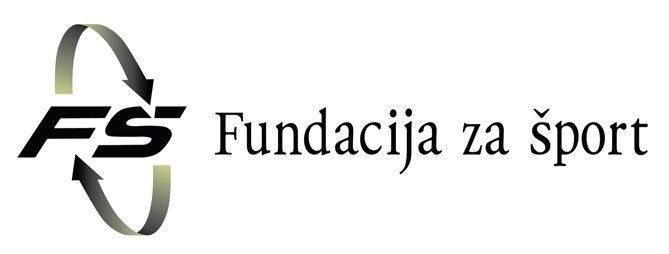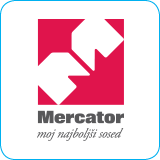Sport and culture are great partners and allies
August 8 2024
The Slovenian Minister of Culture, Dr Asta Vrečko, visited the Slovenian House today. The President of the Olympic Committee of Slovenia, Franjo Bobinac, showed her around the house and they had a working discussion on the connecting points between sport and culture.
The Minister's visit took place on the day of the premiere of a short documentary film on the famous Slovene Athlete Leon Štukelj, who won 2 gold medals at the Olympic Games in Paris in 1924 “From Paris to Paris”, and the Ministry of Culture organised a discussion on Sport, Culture, Tourism - How the Fields Connect.
The Slovenian House in Paris is therefore an even greater opportunity not only to promote Slovenian sport at the Olympic Games in Paris, but also to present Slovenia, its culture, science, cuisine and economy in the broadest possible way. The Slovenian House in Paris is one of the 40 national houses where countries are represented - while 206 Olympic Committees with their national teams are present at this year's Olympic Games. However, the Slovenian House is already recognised or highlighted as one of the five that have attracted the most interest and left the best impression among visitors, Bobinac said during the Minister's visit.
"Sport and culture are great partners, great allies - not only when it comes to Slovenians living abroad, who are always closely linked by sport and culture. At home, in our local environments, we all love both sport and culture. I am glad that in this house we can celebrate sporting successes on the one hand, but at the same time, in various gatherings at events/round tables, we can discuss topics such as gender equality in sport, the green transition, sustainability in sport, the future of athletes after their sporting careers, and also culture," Franjo Bobinac, President of the NOC Slovenia, emphasised after his conversation with the Minister Dr. Asta Vrečko.
"My sincere thanks go to the Olympic Committee and its President, Mr Bobinac, for including culture and art in the programme of the Slovenian House as soon as preparations for the Olympic Games began, and for including culture and art as an integral part of the programme of the Slovenian House. It is important to have a broader understanding of integration, which may have been lacking in the past. Here we represent Slovenia, both through sporting events and as a whole, a successful economy, tourism, development, green transition," said Minister of Culture Asta Vrečko, who took part in the presentation of Slovenia's cultural offer and the achievements of Slovenian artists.
"Sport and sports history are among the most important segments of Slovenian history, because the history of sport is linked to the history of the nation's cultural emancipation - through this we can see how we have developed as a society and a country. But we also need to remember history because it reflects how sport itself has developed. Like the development of the media and sports journalism. This played an important role in the period of Leon Štukelj's performances and in the way the media perceived Štukelj's successes at that time," said Minister Vrečko.
When Leon Štukelj won the Olympic gold medal in 1924, the Cultural and Artistic Olympic Games were still considered to be taking place in parallel. In the same year, the Slovenian sculptor Ivan Zajec represented the then Kingdom of Yugoslavia in Paris with his works of art and made a great impression, especially on French artists.
However, Minister Vrečko stresses that all the successes achieved so far by Slovenian sportsmen and women, as well as by Slovenian cultural figures, should not be taken for granted. "It is not enough for all of us to be proud of our athletes and artists, to breathe with them. We must also think of them later, when they decide to end their careers. At the same time, we must always strive to enable future generations of athletes and bodybuilders to achieve top results, but never at the expense of compromising their own health or social status."
Slovenia and France are united by the Olympic spirit, solidarity and friendship - both in sport and culture. The two countries are also historically linked with the last King of France, Charles X, who is buried in the tomb of the Bourbons at Kostanjevica in Nova Gorica, while most French kings are buried in the Cathedral of Saint-Denis in Paris. With today's signing of a cooperation agreement between the two municipalities, Nova Gorica and Saint-Denis will now be committed to jointly preserving their cultural heritage and cooperating, in particular in the fields of culture and tourism.
More photos at: GALLERY.
